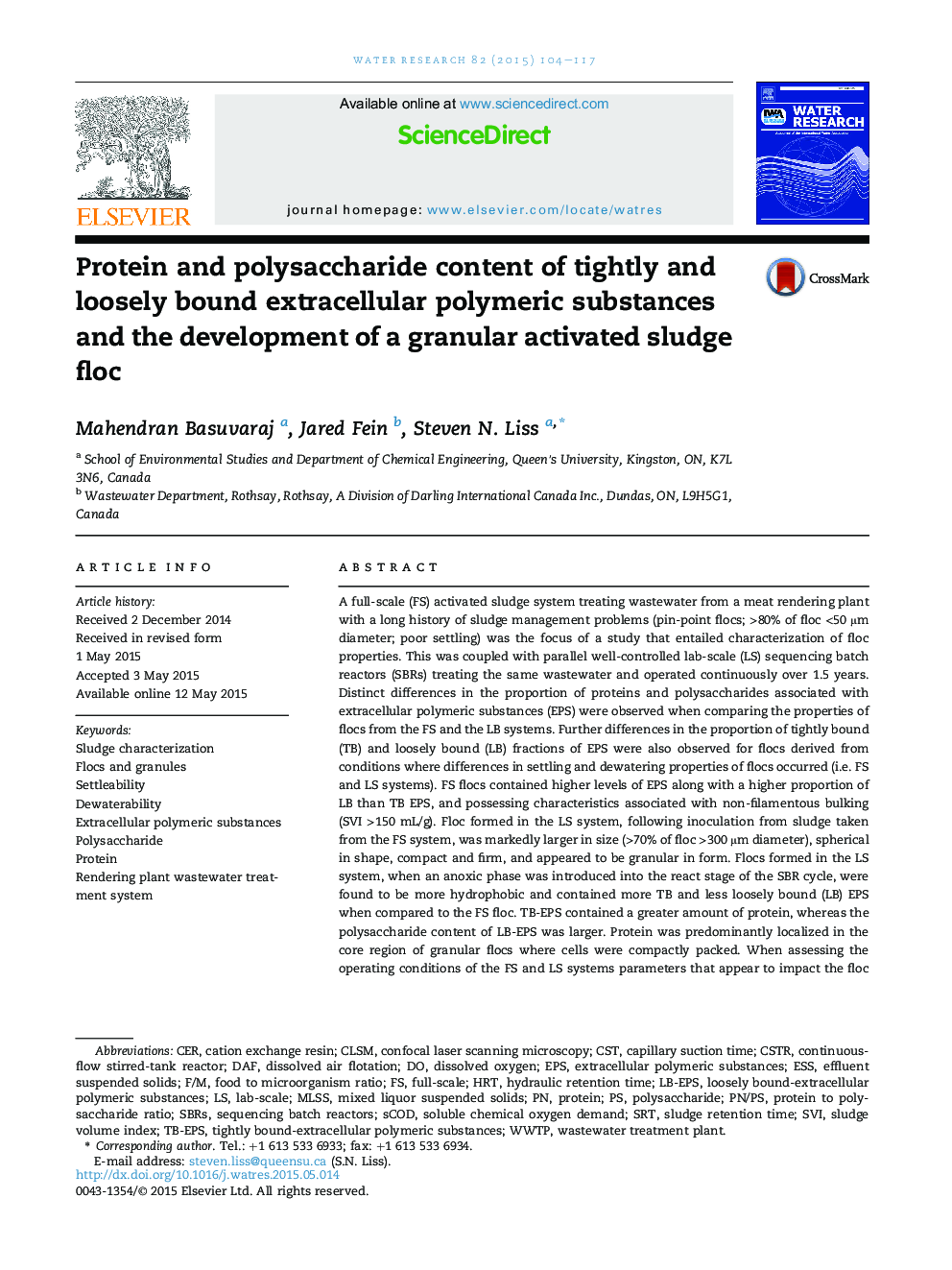| کد مقاله | کد نشریه | سال انتشار | مقاله انگلیسی | نسخه تمام متن |
|---|---|---|---|---|
| 4481063 | 1623086 | 2015 | 14 صفحه PDF | دانلود رایگان |
• Tightly and loosely bound protein and polysaccharide EPS controlling floc behavior.
• Poor settling pin flocs containing higher amount of polysaccharide rich LB-EPS.
• Protein rich TB-EPS exhibited granular flocs contributing improved dewaterability.
• DO and F/M ratio were important parameters controlling granular structures.
A full-scale (FS) activated sludge system treating wastewater from a meat rendering plant with a long history of sludge management problems (pin-point flocs; >80% of floc <50 μm diameter; poor settling) was the focus of a study that entailed characterization of floc properties. This was coupled with parallel well-controlled lab-scale (LS) sequencing batch reactors (SBRs) treating the same wastewater and operated continuously over 1.5 years. Distinct differences in the proportion of proteins and polysaccharides associated with extracellular polymeric substances (EPS) were observed when comparing the properties of flocs from the FS and the LB systems. Further differences in the proportion of tightly bound (TB) and loosely bound (LB) fractions of EPS were also observed for flocs derived from conditions where differences in settling and dewatering properties of flocs occurred (i.e. FS and LS systems). FS flocs contained higher levels of EPS along with a higher proportion of LB than TB EPS, and possessing characteristics associated with non-filamentous bulking (SVI >150 mL/g). Floc formed in the LS system, following inoculation from sludge taken from the FS system, was markedly larger in size (>70% of floc >300 μm diameter), spherical in shape, compact and firm, and appeared to be granular in form. Flocs formed in the LS system, when an anoxic phase was introduced into the react stage of the SBR cycle, were found to be more hydrophobic and contained more TB and less loosely bound (LB) EPS when compared to the FS floc. TB-EPS contained a greater amount of protein, whereas the polysaccharide content of LB-EPS was larger. Protein was predominantly localized in the core region of granular flocs where cells were compactly packed. When assessing the operating conditions of the FS and LS systems parameters that appear to impact the floc properties and the transition to a granular form include dissolved oxygen (DO) concentration and food to microorganism (F/M) ratio.
Figure optionsDownload high-quality image (252 K)Download as PowerPoint slide
Journal: Water Research - Volume 82, 1 October 2015, Pages 104–117
